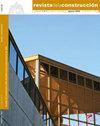Experimental evaluation of the usability of palm tree pruning waste (PTPW) as an alternative to geotextile
IF 1.4
4区 工程技术
引用次数: 3
Abstract
This paper focuses on serving twofold benefits for the environment by providing not only recycling of a waste material but also improving rutting performance of sand subgrade under cyclic traffic loads. In this context, a series of laboratory experiments have been conducted to benchmark the performance of commercially manufactured geotextile and palm tree pruning waste (PTPW) as soil improvement agents. Experimental results of the study were evaluated based on permanent (plastic), total, and elastic deformation, rut depth reduction (RDR), traffic benefit ratio (TBR), percentage of elastic deformation, and resilient modulus (MR). In the view of experimental results, geotextile and PTPW-reinforced sand subgrades demonstrated well performance in the sense of permanent and elastic deformations when compared to unreinforced case. It is also realized that the most satisfactory performance was obtained when geotextile or PTPW are located at a burial depth of both 50 mm and 100 mm. In that case, TBR values of geotextile and PTPW-reinforced subgrades were almost the same at 20 mm permanent deformation (i.e., 6.71 and 6.76, respectively). Furthermore, when the results were evaluated based on RDR, it is observed that geotextile and PTPW reinforcements reduced the rut depth at the rate of 49.31 % and 37.15 % at the end of 5000 load cycle, respectively.棕榈树修剪废料(PTPW)作为土工布替代品的可用性实验评价
本文的重点是通过提供废物的回收利用和改善循环交通荷载下沙土路基的车辙性能,为环境提供双重效益。在这种情况下,进行了一系列的实验室实验,以衡量商业生产的土工布和棕榈树修剪废料(PTPW)作为土壤改良剂的性能。试验结果基于永久(塑性)、总变形和弹性变形、车辙深度减少(RDR)、交通效益比(TBR)、弹性变形百分比和弹性模量(MR)进行评估。试验结果表明,与未加筋的路基相比,土工布和ptpw加筋砂路基在永久变形和弹性变形方面表现出良好的性能。土工布或PTPW埋深分别为50mm和100mm时,其性能最理想。在这种情况下,土工布和ptpw加筋路基在20mm永久变形时的TBR值基本相同(分别为6.71和6.76)。此外,当基于RDR对结果进行评估时,发现在5000次荷载循环结束时,土工布和PTPW增强筋分别以49.31%和37.15%的速度减少了车辙深度。
本文章由计算机程序翻译,如有差异,请以英文原文为准。
求助全文
约1分钟内获得全文
求助全文
来源期刊

Revista de la Construccion
工程技术-工程:土木
CiteScore
2.30
自引率
21.40%
发文量
0
期刊介绍:
The Journal of Construction is aimed at professionals, constructors, academics, researchers, companies, architects, engineers, and anyone who wishes to expand and update their knowledge about construction. We therefore invite all researchers, academics, and professionals to send their contributions for assessment and possible publication in this journal. The publications are free of publication charges.
OBJECTIVES
The objectives of the Journal of Construction are:
1. To disseminate new knowledge in all areas related to construction (Building, Civil Works, Materials, Business, Education, etc.).
2. To provide professionals in the area with material for discussion to refresh and update their knowledge.
3. To disseminate new applied technologies in construction nationally and internationally.
4. To provide national and foreign academics with an internationally endorsed medium in which to share their knowledge and debate the topics raised.
 求助内容:
求助内容: 应助结果提醒方式:
应助结果提醒方式:


